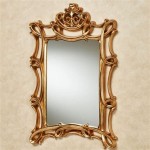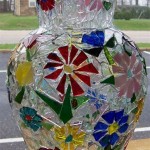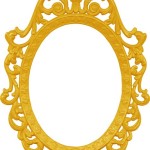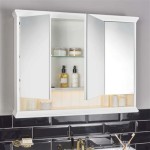Antique Gold Leaf Mirrors
Antique gold leaf mirrors represent a fascinating intersection of art, history, and craftsmanship. These decorative objects offer a glimpse into past eras, reflecting not only images but also the styles and techniques prevalent in their time of creation. Understanding the nuances of antique gold leaf mirrors requires exploring their history, construction, identification, care, and value.
History of Gold Leafing and Mirrors
The use of gold leaf dates back to ancient civilizations. Egyptians utilized gold leaf in tombs and on sarcophagi, while the Romans incorporated it into architecture and art. Mirror production also has a long history, with early examples made from polished obsidian or metal. The combination of gold leaf and mirrors became particularly popular during the Baroque and Rococo periods, where ornate frames adorned with intricate gold leaf designs were highly prized.
Construction of Antique Gold Leaf Mirrors
Creating a gold leaf mirror is a meticulous process involving numerous steps. The foundation of the mirror is typically a glass sheet, often thicker than modern mirrors. A layer of gesso, a mixture of animal glue and chalk, is applied to the frame to create a smooth surface for the gold leaf. Next, thin sheets of gold leaf are carefully laid onto the gesso and burnished with specialized tools. The frame is then sealed with a protective varnish to prevent oxidation and damage to the delicate gold leaf.
Identifying Antique Gold Leaf Mirrors
Identifying a genuine antique gold leaf mirror requires careful observation and attention to detail. Examining the glass can offer clues; antique mirrors often exhibit slight imperfections or distortions due to early manufacturing techniques. The frame's construction and style are also crucial. Hand-carved details and age-related wear can indicate authenticity. Finally, examining the gold leaf itself can reveal information. Genuine gold leaf will exhibit variations in thickness and tone, whereas imitation gold leaf often appears uniform and overly bright.
Different Styles and Periods of Antique Gold Leaf Mirrors
Antique gold leaf mirrors encompass a wide range of styles and periods. Baroque mirrors are characterized by elaborate ornamentation, featuring scrolls, shells, and floral motifs. Rococo mirrors, on the other hand, tend to be lighter and more asymmetrical, emphasizing curves and natural forms. Neoclassical mirrors often incorporate simpler geometric designs and classical elements. The Victorian era saw a resurgence of ornate frames, with Gothic and Renaissance revival styles becoming popular. Identifying the style can help determine the mirror's age and provenance.
Care and Preservation of Antique Gold Leaf Mirrors
Preserving the beauty and integrity of antique gold leaf mirrors requires careful handling and appropriate care. Avoid exposing the mirror to direct sunlight or extreme temperature fluctuations, as these can damage the gold leaf and the glass. Dusting should be done gently with a soft brush or a microfiber cloth. Avoid using harsh chemicals or abrasive cleaners, as these can strip the protective varnish and damage the gold leaf. For significant damage or restoration, consulting a professional conservator is recommended.
Value and Appraisal of Antique Gold Leaf Mirrors
The value of an antique gold leaf mirror depends on several factors, including its age, condition, size, style, and provenance. Mirrors from significant historical periods or with documented ownership histories often command higher prices. The quality of the craftsmanship and the intricacy of the gold leaf work also contribute to the value. Consulting a qualified appraiser is recommended to determine the accurate market value of an antique gold leaf mirror.
Where to Find Antique Gold Leaf Mirrors
Antique shops, auction houses, and online marketplaces offer potential avenues for acquiring antique gold leaf mirrors. Reputable dealers can provide information about the mirror's history and authenticity. When purchasing online, it's essential to carefully review the seller's reputation and request detailed photographs and condition reports.
Displaying Antique Gold Leaf Mirrors
Displaying antique gold leaf mirrors effectively enhances their beauty and integrates them into a space. Consider the mirror's size and style when choosing a location. Hanging the mirror on a wall allows it to serve as a focal point, while placing it on a mantelpiece or a console table creates a more intimate display. Avoid overcrowding the area around the mirror, allowing its ornate frame to be fully appreciated.
Gold Leafing Techniques and Variations
Various gold leafing techniques can be observed on antique mirrors. Water gilding involves applying the gold leaf to a wet gesso surface, resulting in a bright and highly reflective finish. Oil gilding, on the other hand, uses a slower-drying oil-based size, allowing for greater manipulation of the gold leaf and creating a softer, more matte finish. Examining the surface of the gold leaf can often reveal the technique used and offer insights into the mirror's age and origin.

Antique French Louis Xvi Gold Leaf Mirror 1890s For At Pamono

Large English Antique Gold Leaf Mirror 344710 Ingantiques Co

Marley Forrest Large Rectangle Antique Gold Leaf Beveled Glass Classic Mirror 46 In H X 32 W 2024 The Home Depot

American Gold Leaf Mirror Ammi Ribar Antiques Fine Period Frames

Antique Gold Leaf Mirror 1840 For At Pamono

Marley Forrest Medium Rectangle Antique Gold Leaf Classic Mirror 34 In H X 49 W 84001 The Home Depot

French Stunning Ornate Antique Gold Leaf Mirror For From 28th February To 24th March Bidsquare

Antique Art Nouveau Wood Hand Carved Real 18k Gold Leaf Framed Beveled Mirror

Classic Baroque Wall Mirror Antique Gold Leaf Made In Italy Carved Cm 87x108 Victorian Large Entryway Item 8064 Israel

Antique Style Hand Carved Gold Leaf Mirror








